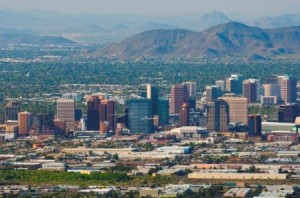 No doubt you’ve heard the term “population health” bandied about these days… especially as the nation wrestles with finding ways to keep people healthier while decreasing health care costs. But what exactly is population health?
No doubt you’ve heard the term “population health” bandied about these days… especially as the nation wrestles with finding ways to keep people healthier while decreasing health care costs. But what exactly is population health?
At its core, population health examines groups of people, their health outcomes, and the elements that influence those outcomes. Examples of things that influence health outcomes include public health interventions, the social environment (income, education, employment, family and social support, culture), the physical environment (access to healthy food, community design, etc.), genetics, behavior, and access to preventative health care. In other words, population health combines a population’s health outcomes with the things that influence those outcomes including the public policy that drives social and environmental determinants.
You might ask… isn’t population health really just another word for public health? They’re related… but some of the major determinants that influence health are related to larger public policy issues like education, income, employment, family and social support, community design, access to healthy food and access to preventative and acute health care.
That brings me to why it’s so important for us as public health officials to work with communities to influence policy decisions across the spectrum of social determinants. For example… at first it might not look like a city’s General Plan or city policies have much to do with population health. A closer view shows that it has a ton to do with population health.
Whether a city makes a transportation project friendly to pedestrians & bicyclists has a direct impact on whether that city has an environment that invites people to incorporate regular exercise into their day. How a city zones and issues licenses for weekend farmers markets can make a huge difference in whether they happen or not. There are thousands of examples… but you get the idea… social and environmental determinants are a huge public and population health lever.
Of course… the public health system can’t do this alone. It takes a village. That’s why organizations like the Livable Communities Coalition and the Sonoran Institute among others are so important as they work to help Arizona communities to become places that improve those social and environmental determinants of health that make such a big impact on public health outcomes. Next week, I’ll write about a recently developed (AZ specific) Toolkit put together by the Healthy Community Design Collaborative to help folks mobilize to create healthier communities.










It is not only making the transportation pedestrian and bicyclist friendly.
Copenhagen launched a great project years ago called the city bike. They placed free-to-use bikes all over the city and everybody could grab a bike to go where they needed to go and then deposit the bike in the next city bike stand.
I think the project worked very well and you saw lots of people just taking a bike instead of bus/taxi/train.
Very good article. It has been a pleasure reading it.